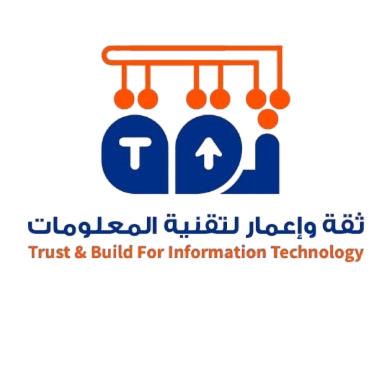- 3 June 2024

Enterprise resource planning(ERP) is a project My information, designed to coordinate all resources, information and activities necessary to complete practical procedures, e.g Accounting and human resources In the institution.[1][2][3]ERP supports most of the systems procedures that manage a variety of business functions such as manufacturing, supply management, finance, projects, human resources, and customer relationship management, all in one. Database Unified.
He depends Spark Tech system -SparkTech in ERP on a shared database Described as(Master Data) A special software design. The shared database allows the work departments to store and retrieve information during the period of activity. The software design allows the work management to choose the necessary forms, arrange them, link them to the suppliers’ forms, and add new forms, especially to improve performance. Ideally, data is integrated between different business processes, but in practice, an ERP system may include a group of disparate applications, each of which manages separate data stores in a single database..
He provides Spark Tech system -SparkTech– ERP An integrated and constantly updated view of core business processes using Databases Commonly maintained Database management system(SQL Server)ERP systems track business resources – cash ,And raw materials, And production capacity– The status of business commitments: requisitions, purchase orders, and payroll. The applications that make up the system share data across various departments (manufacturing, purchasing, and sales).And accounting etc. that provide data. Enterprise Resource Planning (ERP) facilitates the flow of information between all business functions and manages communications with Stakeholders Externals.
Spark Tech system -SparkTech It is an industry In millions of riyals Produces components that support a variety of business functions. where They became investments Spark Tech Company, As of year2023, one of the largest spending categories Technical development In companies that take from Kingdom of Saudi Arabia Its headquarters. Although ERP systems Early ERP focused on large companies, but small companies are increasingly using ERP systems. In 2019,And it has The global ERP software market grew by 9%, resulting in a global value of approximately $39 billion in total software revenue In the world . So Spark sector–One of the sectors of Trust & Build For Information Technology Company also paid attention to this aspect and provided special versions that suit the size of small or developing enterprises and serve all their developmental requirements as well as their basic ones.
Merges Spark Tech system -SparkTech(ERP) diversifies organizational systems and facilitates error-free transactions and production, thus enhancing the efficiency of the organization. However, ERP system development is different from traditional system development. The Spark Tech system works -SparkTech(ERP) on a variety of Computers And configurations the network, And it is done You will take Database(SQL Server)As a repository of information.
adjectives:
YIncludeSpark Tech system -SparkTech)– ERP has the following characteristics:
- Integrated system.
- Operates in real time (or near it).
- A common database supports all applications.(SQLServer)
- Consistent look and feel across units.
- System installation with detailed application/data integration by IT department.
- Publishing options included:locallyOr hosted on the cloud.
- General educational section.
- The term enterprise resource planning(ERP)[in general .
The origin of the name “enterprise resource planning” is an Arabization of the name planning in English Enterprise Resource Planning, which means almost literally “enterprise resource planning”, and this term originated from the “Material Requirements Planning (MRP)” systems – later called Manufacturing Resource Planning (MRP2) – and “Manufacturing Computing”, and was introduced by the research and analysis company Gartner. ERP systems currently seek to cover all the basic functions of any organization, regardless of whether it is commercial or not. Non-industrial organizations, non-profit organizations, and governments are all now able to use ERP systems.
For a system to be considered an ERP, a software package must provide the functionality of at least two systems. For example, a software package that provides both payroll and accounting functions could technically be considered ERP system software. However, the term is reserved for larger applications with a broader scope..
Providing an ERP system as an alternative to two or more independent applications eliminates the need for previously required internal interfaces between systems, and provides additional benefits ranging from standardization and less maintenance (one system instead of two or more) to better and easier reporting capabilities (since the data is kept in one database). Examples of modules in an ERP system that were previously single applications include: manufacturing, supply chain, finance, customer relationship management, human resources, warehouse management, and decision support system..
Look at solutions Spark Tech system -SparkTech– ERP
Some organizations, which often have the technical skill to integrate software products, choose to implement only parts of an ERP system and then evolve External interfaces To other ERP systems or to other standalone systems for their different application needs. For example, an organization can choose to use a human resources management system from one supplier, and use financial systems from another supplier, and then create integration between the systems themselves.
This is common in the sector Retail trade The store has separate applications for point-of-sale products and finance, then a series of specialized applications to deal with business requirements such as warehouse management, employee lists, merchandise marketing, and logistics services..
Perfectly, it provides Spark Tech system -SparkTech– ERP A single database that includes all software design data, which includes the following:
Engineering, bills of materials, scheduling, capacity, workflow management, quality control, cost management, manufacturing process, manufacturing projects, and manufacturing pipeline
Cash orders, inventory, purchasing, product shaping, supply chain planning, supplier scheduling, merchandise inspection, claims processing, and accounting commissions
General ledger, cash management, accounts payable, accounts receivable and fixed assets
Costs, invoices, expenses and activity management
Salaries, training, daily preparation, roster preparation, and benefits
Customer relationship management
Sales, Marketing, Committees, Service, Customer Communications, Telephone Support Center and Technical Support
- Information Systems
- Work process management
- Enterprise resource planning


